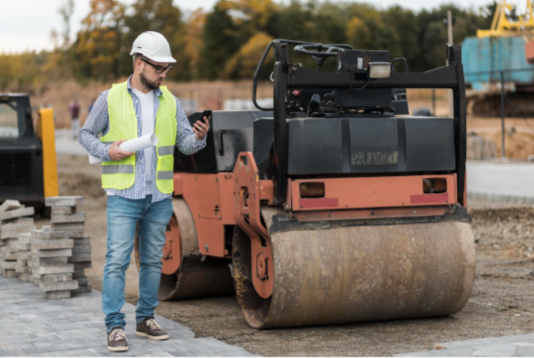
Smart home technology has rapidly transformed daily life, and robot vacuums are a prime example of this innovation. Modern cleaning robots are not just vacuuming your floors—they are equipped with cameras, sensors, and AI systems that allow them to navigate complex environments efficiently.
However, with these advancements comes an important question: are robot vacuums with built-in cameras a genuine innovation, or do they pose privacy risks? In this article, we explore the benefits, potential privacy concerns, and safety measures you should consider before using these devices.
How Built-in Cameras Enhance Robot Vacuum Functionality
Built-in cameras significantly improve robot vacuum performance, making them more than just floor-cleaning machines. Here’s how:
- Advanced Navigation: Cameras help the cleaning robot detect furniture, walls, and obstacles, allowing for precise and efficient cleaning routes.
- Object Recognition: Small objects on the floor, like toys or shoes, are easily identified, reducing the chances of the robot getting stuck or causing damage.
- Remote Monitoring: Many robots allow you to access a live camera feed through a smartphone app, providing an additional layer of home surveillance.
- Improved Mapping: Cameras enable high-accuracy mapping, so the robot can remember room layouts and optimize cleaning paths over time.
These features also make certain models a mop robot, offering simultaneous vacuuming and mopping while adjusting performance intelligently.
Privacy Concerns with Camera-equipped Robots
While built-in cameras offer convenience, there are potential privacy risks to consider:
- Data Security: Images and videos captured by the cleaning robot may be stored in the cloud or transmitted over Wi-Fi. If not properly secured, this data could be vulnerable to hacking.
- Unintended Surveillance: Cameras might capture activities of household members or visitors, raising concerns about consent and privacy.
- Third-party Access: Some manufacturers may use the data for analytics or cloud storage, increasing the risk of unauthorized access.
- Regulation and Transparency: Not all manufacturers clearly communicate how they handle camera data, leaving users uncertain about their privacy protections.
Understanding these risks allows you to use camera-equipped robots safely while still enjoying their advanced features.
Real-world Use Cases and Benefits
Camera-equipped robots provide more than just cleaning efficiency. In practical scenarios, they can:
- Serve as home security monitors, alerting you to intrusions or unusual activity.
- Integrate with smart home systems, coordinating with lights, alarms, or other devices for automated home management.
- Allow remote observation of pets or children while you are away from home.
These benefits demonstrate that camera-equipped cleaning robots can be both innovative and functional—but it’s essential to balance convenience with privacy considerations.
How to Safely Use Robot Vacuums with Cameras
To enjoy the advantages of these devices while minimizing privacy risks, follow these guidelines:
- Secure Network: Use a protected Wi-Fi network with strong encryption to prevent unauthorized access.
- Control Permissions: Adjust app permissions to limit access only to necessary functions.
- Regular Updates: Keep firmware and apps up to date to address security vulnerabilities.
- Physical Covers: If available, cover or disable the camera when it is not needed.
- Choose Trusted Brands: Opt for manufacturers with clear privacy policies and secure cloud storage practices.
Popular Robot Vacuums with Built-in Cameras
Here are some high-quality 3i cleaning robots that combine camera-based intelligence with high-performance cleaning:
- 3i S10 Ultra: Features WaterRecycle™ system for automatic water recycling, 13,000Pa suction, AI obstacle avoidance, and remote monitoring.
- 3i P10 Ultra: Provides 18,000Pa suction, UltraReach™ extendable mop, automatic hot water cleaning and drying, and high-accuracy mapping.
- 3i G10+: Budget-friendly model with automatic dust compression and extended mop design, ideal as a mop robot for corners and edges.
These 3i robots utilize advanced camera sensors to enhance cleaning precision, avoid obstacles, and provide optional home monitoring without compromising efficiency.
Future Trends: Innovation vs Privacy Balance
The next generation of camera-equipped cleaning robots will likely feature:
- AI-powered obstacle recognition: Robots will better distinguish objects, people, and pets.
- Multi-sensor fusion: Cameras will work alongside LiDAR, infrared, and ultrasonic sensors for more accurate navigation.
- Predictive cleaning: Robots will adapt cleaning intensity in real-time based on room activity and floor type.
- Enhanced privacy measures: Local data storage, encryption, and transparent privacy policies will become standard, ensuring users can enjoy innovation safely.
As technology evolves, camera-equipped cleaning robots will become smarter, more efficient, and more integrated into home automation, all while addressing privacy concerns.
Summary
Robot vacuums with built-in cameras offer significant innovation in home cleaning and monitoring. They can optimize cleaning routes, detect obstacles, and even allow remote home observation.
However, these conveniences come with privacy considerations. By following best practices—secure networks, controlled permissions, firmware updates, and choosing trusted brands—you can enjoy the benefits without compromising safety. Models like 3i S10 Ultra, P10 Ultra, and G10+ deliver both high-performance cleaning and innovative camera functionality, with some even serving as a mop robot.




